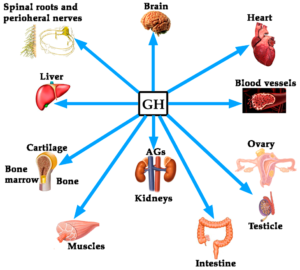
10 Warning Signs of Mold Toxicity: What You Need to Know to Protect Your Health
Mold is a common but often overlooked problem that can have serious health consequences. Mold toxicity occurs when mold releases mycotoxins, which are harmful substances that can cause a wide range of health issues. Understanding the warning signs of mold toxicity is crucial for protecting yourself and your loved ones from its harmful effects. In this article, we’ll explore the 10 key warning signs of mold toxicity, helping you identify potential risks early and take the necessary steps to address them.
1. Respiratory Issues: Persistent Coughing and Wheezing
One of the most common signs of mold toxicity is respiratory problems. If you or someone in your household experiences persistent coughing, wheezing, or shortness of breath, it could be due to mold exposure. Mold spores are tiny and can easily be inhaled, causing irritation in the respiratory system. Over time, this can lead to chronic respiratory conditions such as asthma or bronchitis. If you notice unexplained respiratory issues that persist despite treatment, it’s essential to investigate the possibility of mold in your environment.
2. Unexplained Fatigue and Weakness
Feeling tired and weak for no apparent reason is another warning sign of mold toxicity. Mold exposure can cause chronic fatigue, making it difficult to carry out daily activities. This fatigue is often accompanied by a general feeling of weakness or malaise, which can be debilitating over time. If you’re experiencing unexplained fatigue that doesn’t improve with rest or sleep, mold toxicity could be a contributing factor.
3. Cognitive Problems: Memory Loss and Difficulty Concentrating
Mold toxicity can also affect your brain function, leading to cognitive problems such as memory loss, difficulty concentrating, and brain fog. These symptoms can make it challenging to focus on tasks, remember important information, or think clearly. The neurotoxic effects of mold can be particularly concerning, as they may lead to long-term cognitive impairment if not addressed promptly.
4. Headaches and Migraines
Frequent headaches and migraines are another common sign of mold toxicity. The mycotoxins released by mold can cause inflammation in the body, leading to severe headaches. These headaches may occur more frequently or become more intense over time. If you’re experiencing an increase in headaches or migraines without a clear cause, mold exposure should be considered as a potential trigger.
5. Skin Irritation: Rashes and Itching
Mold toxicity can also manifest through skin problems such as rashes, itching, and irritation. These skin issues may appear suddenly and be resistant to typical treatments. The skin is one of the body’s first lines of defense against toxins, so it’s not uncommon for mold exposure to cause dermatological symptoms. If you’re dealing with unexplained skin problems, it’s worth checking your living environment for signs of mold.
6. Allergic Reactions: Sneezing, Runny Nose, and Watery Eyes
Mold is a well-known allergen, and exposure to it can trigger allergic reactions in many people. Common symptoms include sneezing, a runny nose, watery eyes, and nasal congestion. These symptoms are often mistaken for seasonal allergies, but if they persist throughout the year or worsen when you’re indoors, mold toxicity could be the culprit. Chronic exposure to mold can also worsen existing allergies or asthma, making it even more important to address the issue promptly.
7. Sinus Infections and Nasal Congestion
Mold exposure can lead to chronic sinus infections and persistent nasal congestion. The inflammation caused by mold spores can block your sinuses, making it difficult to breathe through your nose. This can result in recurring sinus infections, which may require frequent medical treatment. If you find yourself constantly dealing with sinus issues, mold toxicity should be considered as a possible cause.
8. Muscle and Joint Pain
Unexplained muscle and joint pain can be a sign of mold toxicity. Mycotoxins from mold can cause inflammation in the body, leading to aches and pains in the muscles and joints. This pain may be diffuse and affect different parts of the body at different times, making it difficult to pinpoint the exact cause. If you’re experiencing ongoing pain without an obvious explanation, it’s worth considering whether mold exposure could be a factor.
9. Digestive Problems: Nausea, Diarrhea, and Abdominal Pain
Mold toxicity can also affect your digestive system, causing symptoms such as nausea, diarrhea, and abdominal pain. These symptoms may be intermittent or persistent and are often mistaken for food poisoning or a stomach virus. However, if you experience ongoing digestive issues that don’t seem to have a clear cause, mold exposure could be contributing to your discomfort.
10. Mood Changes: Anxiety, Depression, and Irritability
Finally, mold toxicity can have a significant impact on your mental health. Exposure to mold can cause mood changes, including increased anxiety, depression, and irritability. These mood changes may occur suddenly and without an obvious trigger. If you’re noticing a shift in your mental well-being, especially if it’s accompanied by other symptoms of mold toxicity, it’s important to investigate the possibility of mold exposure in your home or workplace.
How to Address Mold Toxicity
If you suspect that mold toxicity is affecting your health, it’s crucial to take action as soon as possible. Here are some steps you can take to address the problem:
1. Identify the Source of Mold
The first step in addressing mold toxicity is identifying the source of mold in your environment. Mold can grow in damp, humid areas such as bathrooms, basements, and kitchens. Look for visible signs of mold, such as black spots on walls or ceilings, musty odors, or water stains. If you’re unsure whether mold is present, consider hiring a professional mold inspector to assess your home or workplace.
2. Remove the Mold
Once the source of mold has been identified, it’s essential to remove it promptly. Small areas of mold can often be cleaned with household cleaners, but larger infestations may require professional remediation. Be sure to follow proper safety protocols when cleaning mold, such as wearing protective gear and ensuring adequate ventilation.
3. Improve Indoor Air Quality
Improving indoor air quality can help reduce the risk of mold toxicity. Use dehumidifiers to keep humidity levels below 60%, and ensure that your home is well-ventilated. Regularly clean and maintain your HVAC system to prevent mold growth in air ducts. Consider using air purifiers with HEPA filters to remove mold spores from the air.
4. Seek Medical Treatment
If you’re experiencing symptoms of mold toxicity, it’s important to seek medical treatment. A healthcare professional can help you determine whether mold exposure is contributing to your symptoms and provide appropriate treatment options. In some cases, long-term exposure to mold may require ongoing medical care to manage symptoms and prevent further health complications.
5. Prevent Future Mold Growth
Preventing future mold growth is key to avoiding mold toxicity. Take steps to keep your home dry and well-ventilated, and promptly address any water leaks or moisture issues. Regularly inspect your home for signs of mold, and address any problems as soon as they arise. By staying vigilant, you can protect yourself and your loved ones from the harmful effects of mold toxicity.
Conclusion
10 Warning Signs of Mold Toxicity __ Mold toxicity is a serious health concern that can manifest in a variety of ways, from respiratory issues and fatigue to cognitive problems and skin irritation. By being aware of the warning signs and taking proactive steps to address mold in your environment, you can protect your health and well-being. If you suspect that mold toxicity is affecting you or your family, don’t hesitate to take action—your health depends on it.






